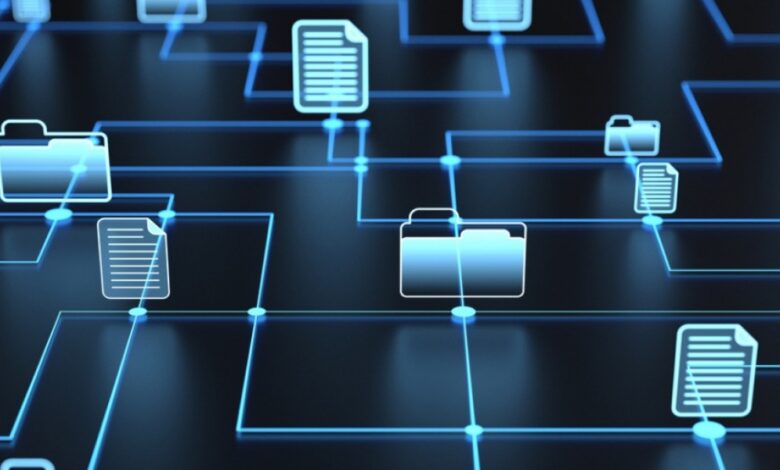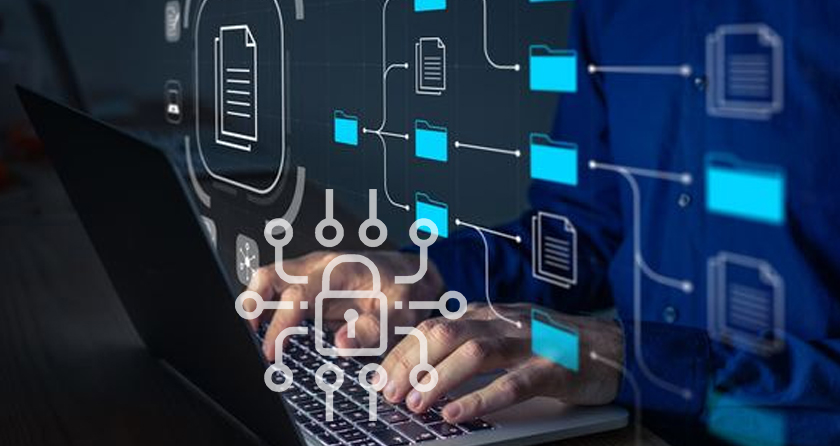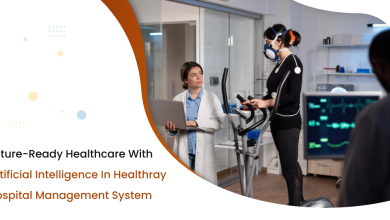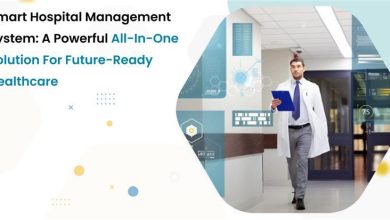
Through technological advancements in the digital landscape, every industry witnessed technical advancements leading to many benefits in their operations.
With the introduction of artificial intelligence and later generative artificial intelligence, every industry saw a transformative change with improvement in decision-making and operational efficiency.
Optical Character Recognition or OCR Solutions have helped various industries automate their routine and repetitive tasks without human intervention, leading to a reduction in errors, freeing up human resources, and improving profitability.
OCR Solutions has been a game-changer, specifically in the healthcare industry, as it has helped improve patient care and saved numerous lives.
In this blog, we will explore the various functions of OCR solutions, how it works, and how it helps in healthcare, especially in improving patient records management.

Functions of OCR Solutions
OCR is a technology that helps to convert various types of scanned documents, such as PDFs, images, and handwritten notes (particularly doctor’s prescriptions), into editable and searchable data.
OCR solutions help health institutions with the various functionalities that help them in implementing OCR technology and using its various functions that are given below:
Character Recognition
OCR solutions use advanced artificial intelligence algorithms to recognize characters, symbols, and patterns within scanned documents and images with enhanced accuracy, irrespective of font style and size. As a result, healthcare institutions experience seamless and accurate text recognition capabilities across all document types.
Text Extraction
In case the scanned document or image is of poor quality or has distorted text, OCR solutions help in precise text extraction from documents, leading to the effortless conversion of the scanned text or image into searchable and editable format.
Document Classification
OCR solutions also have the ability to classify your documents based on predefined criteria such as document type, patient identifier, or medical specialty.
This function helps in efficient organization and quick retrieval of patient records, leading to improved patient care and streamlined workflows.
Data Verification
OCR technology uses sophisticated verification mechanisms that verify the extracted data against predefined templates or databases to ensure that the patient information is accurate and consistent.
As a result, there is a minimisation of errors and mitigation of risks associated with manual data entry.
Data Validation
OCR solutions play an important role in validating the extracted data for various aspects like completeness, integrity, and compliance with all the required regulatory standards for the healthcare industry, such as HIPAA (Health Insurance Portability and Accountability Act).
By incorporating and implementing data validation rules, OCR solutions help in the maintenance of data accuracy and integrity across the entire process of records management.
Handwriting Recognition
Advanced OCR systems use machine learning algorithms to accurately recognize and interpret handwritten notes or prescriptions. By digitizing handwritten documents, OCR eliminates the need for manual prescriptions, leading to improved accessibility to patient records and medical history.
How Does OCR Solution Work?
Let us now understand the various steps in the working of the transformative technology of OCR Solutions:
Image Acquisition
The process of OCR solution starts with the acquisition of high-quality images of documents by using scanners or digital cameras. By obtaining an optimal image that has clarity and legibility, there is a higher accuracy rate in text recognition.
Preprocessing
The images that are acquired undergo preprocessing techniques such as noise reduction, skew correction, and contrast improvement to enhance readability and OCR accuracy.
Further, the preprocessing step optimises image quality and prevents the common risks that are associated with document scanning.
Text Detection
OCR solutions use OCR algorithms to analyze and detect the text region in the preprocessed image. OCR systems identify the text blocks within the image by using various techniques like edge detection and contour analysis.
Character Segmentation
The text regions that were identified in the previous step undergo segmentation into individual characters or words in order to prepare the scanned image for text recognition.
With the help of character segmentation, OCR algorithms can isolate text elements for accurate recognition and interpretation.
Feature Extraction
After character segmentation, OCR software extracts distinctive features from the characters, such as size, shape, stroke patterns, and many more to create various character descriptors.
With the help of feature extraction, the pattern recognition algorithms get an input that helps in developing strong character recognition capabilities.
Character Recognition
OCR solutions match the extracted features from the previous step with predefined character templates by using pattern recognition algorithms such as neural networks.
The process of character recognition involves comparing the character descriptors with predefined templates and selecting the best match, which leads to the accurate identification and classification of characters.
Post-Processing
To enhance the accuracy and readability of the recognized text, the recognized characters undergo post-processing techniques.
The postprocessing techniques include error correction mechanisms, context analysis, and language modelling to improve OCR outputs and the quality of text recognition.
Text Reconstruction
After completing the process of character recognition, the recognized characters are again reconstructed into machine-readable text while preserving the layout and formatting of the document.
With the help of the OCR solution, the document is presented in its original form and structure while maintaining the readability of the digitized content.
Output Generation
The final output generated after completing the entire character recognition process, including text reconstruction, includes an editable and searchable document, which helps users to change the document, search from it, and analyze the digitized document in an effective and efficient manner.
OCR Solutions In Healthcare
OCR solutions have revolutionised the landscape of healthcare by automating routine and repetitive tasks that help improve patient records management and enhance patient care.
Digitization of Paper Records
With the help of OCR solutions, healthcare institutions are able to seamlessly digitize paper-based patient records which eliminates the reliance on vast amounts of physical documents and helps in the maintenance of electronic health records (EHR).
Through the digitization of paper records and the digital transformation of healthcare institutions, there is an improvement in the accessibility, security and scalability of patient records management.
Enhanced Data Accessibility
By digitizing patient records and converting them into searchable formats through OCR solutions, healthcare providers are able to access patient records, information, and medical history quickly and securely.
As a result of improved data accessibility, healthcare institutions experience an improvement in clinical decision-making, care coordination, and patient engagement throughout the process of patient diagnosis and care.
Improved Data Accuracy
OCR solutions plays an important role in ensuring the accuracy of the records of patient data digitization by minimizing transcription errors and discrepancies that are associated with manual data entry.
By automating various routine and repetitive tasks of healthcare institutions and automating the data capture and validation processes, OCR solutions improve data integrity and reliability.
Efficient Record Retrieval
OCR solutions helps healthcare institutions automate the indexing and categorization of patient documents to streamline the entire record retrieval process. As a result, healthcare providers are able to locate specific patient records quickly leading to improved patient care and timely diagnosis.
Further, with the help of OCR-enabled search functionalities, there is an improvement in user experience and productivity, leading to greater efficiency in information retrieval for clinical, administrative and research purposes.
Compliance with Regulatory Standards
OCR solutions help healthcare institutions in the secure handling and storage of patient records, information and medical history. As a result, the OCR technology helps the healthcare institutions adhere to all the required regulatory compliances like HIPAA (Health Insurance Portability and Accountability Act).
By implementing strong security measures and access controls, OCR solutions help to mitigate privacy risks by protecting and safeguarding sensitive healthcare information of the patients and the employees of the healthcare institution.
Streamlined Billing and Coding
OCR solutions accelerate the process of extraction of billing codes, patient demographics and clinical documentation from medical records helping in the accurate billing and reimbursement processes.
By reducing manual efforts with the automation of coding workflows, OCR helps the healthcare institutions save costs and improve their revenue.
Conclusion
OCR solutions have led to significant improvements in patient records management in the healthcare industry.
By digitizing patient data that includes the patient’s genetic information, medical history and all other relevant data, healthcare professionals are able to quickly retrieve crucial information that helps them in the diagnostic process and provide improved care to the patient thus saving many lives.
Further, by increased data accuracy and accessibility, the demography of the patient does not matter as they can get the advice of the best healthcare professional due to the improved accessibility of digitized patient records.
Therefore, by using OCR solutions, healthcare institutions can streamline workflows, improve operational efficiency, and deliver a higher quality of patient care to the patients.






